ASI Copying Old Stone Inscriptions
|
Context: Archaeological Survey of India (ASI) is copying old stone inscriptions on temple walls in Tiruchi district.
ASI Copies Old Stone Inscriptions:
|
Sudan Crisis
|
Context: The conflict between the Sudan Armed Forces (SAF) and the Rapid Support Force (RSF) has devastated Sudan.
About Sudan Crisis:
Overview of Indian Stakes:
|
Namibia Drought
|
Context: Namibia plans to cull hundreds of its wild animals to provide meat for its 1.4 million people who are reeling under the worst drought in a century.
Drought in Namibia:
|
Global Fintech Fest 2024
|
Context: Global Fintech Fest (GFF) 2024, the fifth edition of the conference, has recently concluded.
About Global Fintech Fest:
|
Japan’s Heat-Resistant Rice
|
Context: Japan, facing a rice shortage due to extreme weather damaging last year’s crop, is now looking to new heat-resistant rice varieties to help prevent future supply disruptions.
Emihokoro Rice:
|
Recently, the Supreme Court has highlighted the rights of people accused of money laundering, even in the face of stringent provisions on arrest and bail under the Prevention of Money Laundering Act (PMLA), 2002.
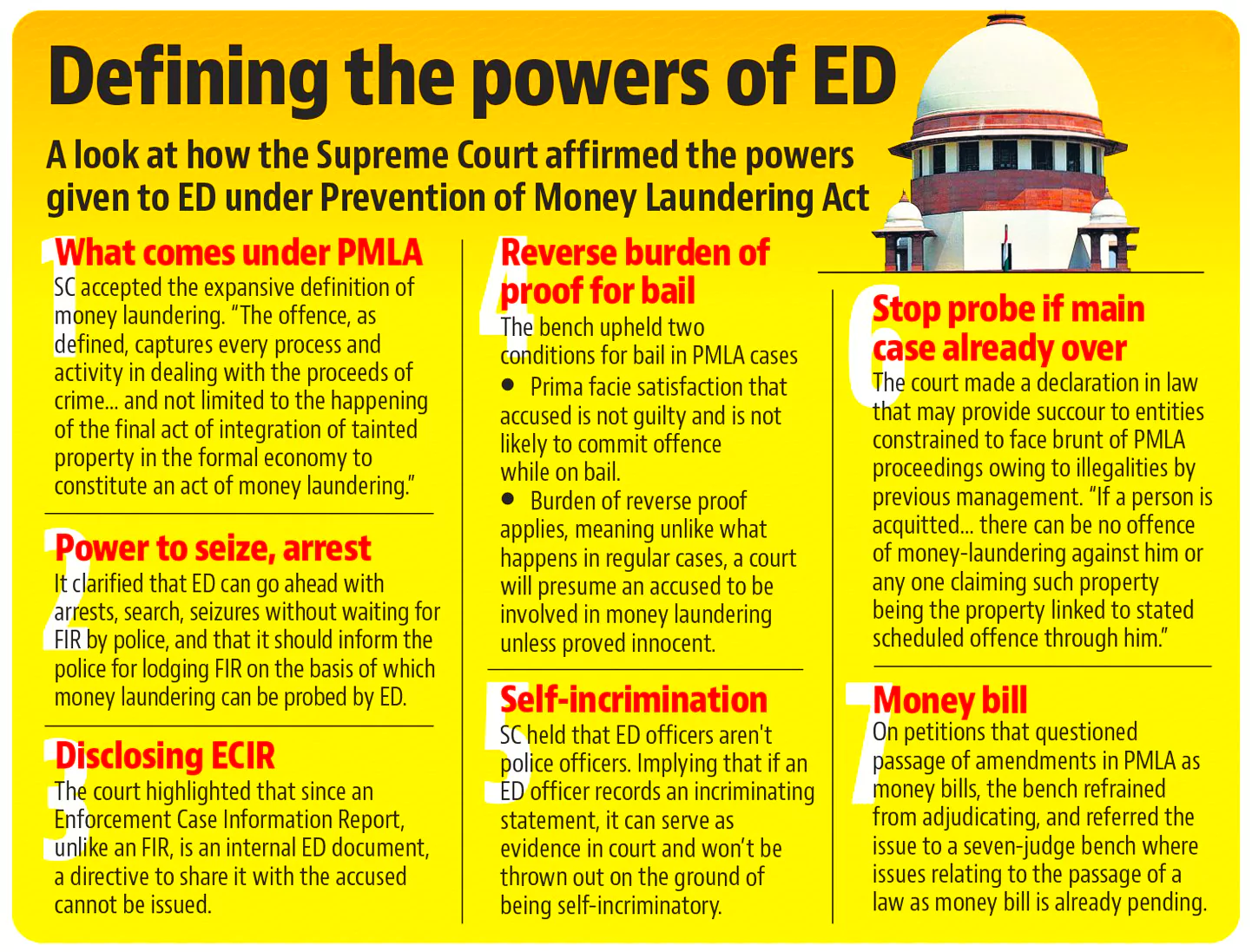
| Feature | Provisions and Background | Supreme Court Verdict |
| On Grounds of Arrest |
|
|
| On Bail for Undertrials |
|
|
| On Need and Necessity to Arrest: |
|
|
| On relaxing Twin Conditions |
|
|
| On Bail Exception for Women |
|
|
| On Confession to ED Officer |
|
|
India is grappling with a paradox of jobless growth, where remarkable Gross Domestic Product (GDP) expansion is not translating into a corresponding increase in employment opportunities.
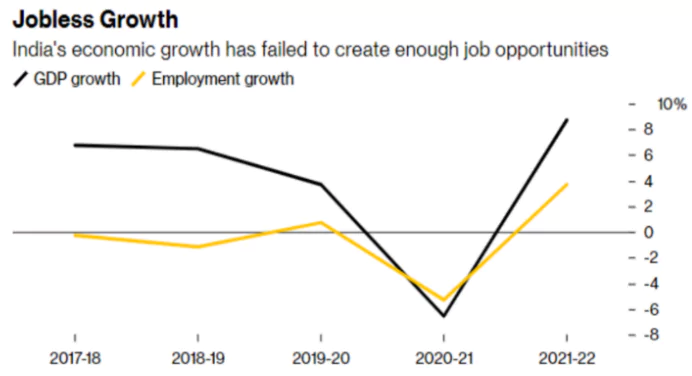 Employment versus Labor Supply Dynamics
Employment versus Labor Supply Dynamics
About Jobless Growth
|
|---|
A person is considered employed if they are engaged in any economic activity, defined as any work, whether for wage/salary, profit, or family gain during the reference period specified.
An unexpected cyclone in the Arabian Sea crossed Gujarat’s coast which left meteorologists puzzled.
About Cyclone Asna
|
|---|
There are more cyclones in the Bay of Bengal than in the Arabian Sea for several reasons:
Vertical wind shear
|
The French culture ministry has chosen the zinc roofers as the country’s entry for the UNESCO list of Intangible Cultural Heritage to be decided at the UN body’s session in Paraguayan capital Asuncion.
 These rooftops are made from sheets of zinc that are meticulously cut, shaped, and installed by these artisans.
These rooftops are made from sheets of zinc that are meticulously cut, shaped, and installed by these artisans.
Intangible
|
|---|
The following 15 traditions and rituals from India have been included on the ‘Intangible Cultural Heritage of India’ list:
| S.No. | Intangible Cultural Heritage Element | Year of Inscription |
| 1. | Kutiyattam, Sanskrit Theater | 2008 |
| 2. | Tradition of Vedic Chanting | 2008 |
| 3. | Ramlila, the Traditional Performance of the Ramayana | 2008 |
| 4. | Ramman, Religious Festival and Ritual Theatre of the Garhwal Himalayas, India | 2009 |
| 5. | Chhau Dance | 2010 |
| 6. | Kalbelia Folk Songs and Dances of Rajasthan | 2010 |
| 7. | Mudiyettu, Ritual Theatre and Dance Drama of Kerala | 2010 |
| 8. | Buddhist Chanting of Ladakh: Recitation of Sacred Buddhist Texts in the Trans-Himalayan Ladakh region, Jammu and Kashmir, India | 2012 |
| 9. | Sankirtana, ritual singing, drumming and dancing of Manipur | 2013 |
| 10. | Traditional Brass and Copper Craft of Utensil Making among the Thatheras of Jandiala Guru, Punjab, India | 2014 |
| 11. | Nowruz | 2016 |
| 12. | Yoga | 2016 |
| 13. | Kumbh Mela | 2017 |
| 14. | Durga Puja in Kolkata | 2021 |
| 15. | Garba of Gujarat | 2023 |
The Central Bureau of Investigation (CBI) conducted a second round of polygraph tests on seven people, in connection with the rape and murder of a resident doctor at the R.G. Kar Medical College and Hospital in Kolkata.
Sodium thiopental
|
|---|
Pre-2010 PrecedentsPrior to 2010, Indian courts were strongly in favor of these tests, even deeming consent from the accused as irrelevant before administering them.
|
|---|
The second meeting of the Committee under the chairmanship of Cabinet Secretary met and reviewed the status of action taken by Ministries/departments and directed them to immediately issue advisories pertaining to queer community.
Ration Card
|
|---|
LGBTQIA+
Purpose of the Acronym:
|
|---|
The problem of appointment of judges, which is linked to the problem of pendency of cases, has always been a matter of debate in India.
As of June 2024, the status of judicial pendency in India is as follows:
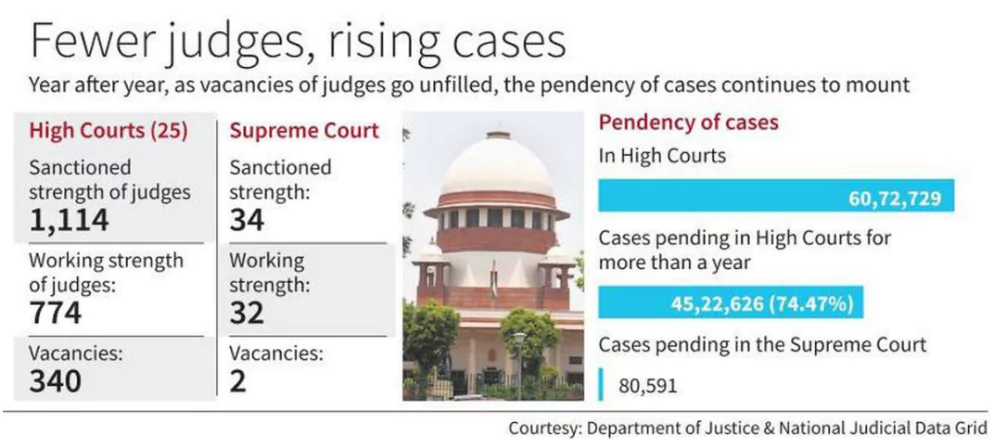
Following are the various reasons for high pendency of cases in the Indian Judiciary:
 Shortage of Judges: The scarcity of judges within the Indian judiciary is a key factor contributing to the backlog.
Shortage of Judges: The scarcity of judges within the Indian judiciary is a key factor contributing to the backlog. Through the collegium system, judges are appointed and transferred in the Supreme Court and high courts across the country.
The Supreme Court held that the collegium system protects the independence of the judiciary.
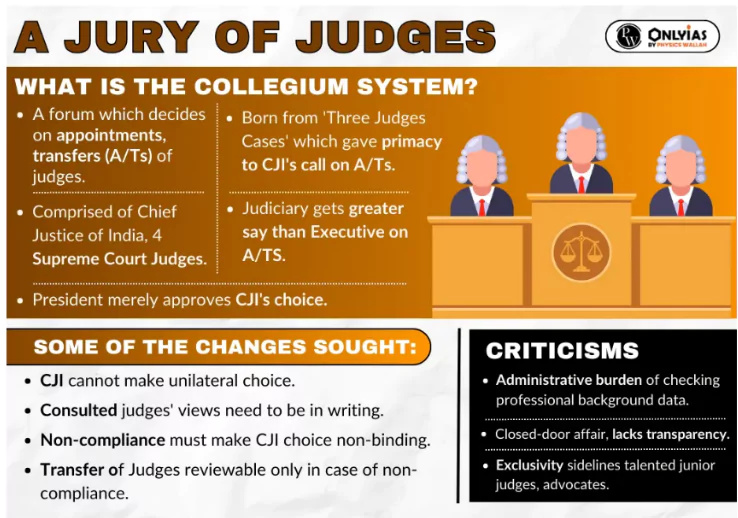
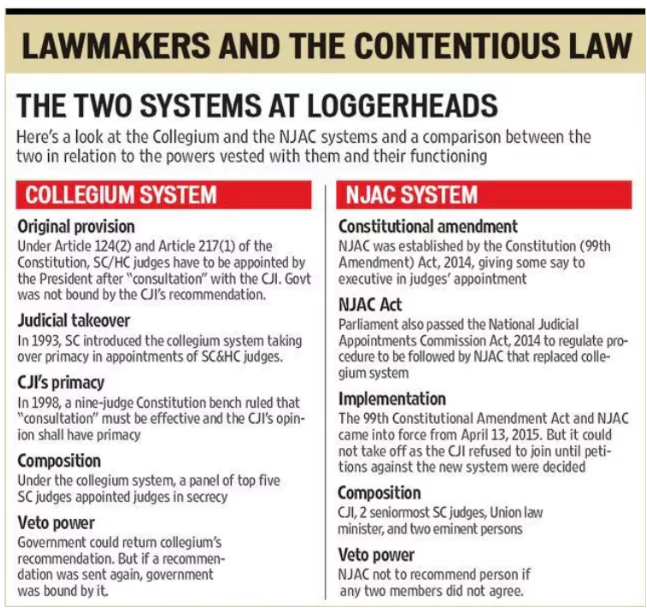 A Structured Method: For the appointment and transfer of judges in higher courts.
A Structured Method: For the appointment and transfer of judges in higher courts. NJAC was introduced by the 99th Constitutional Amendment Act, 2014 to regulate the appointment of judges and empower the commission.
The NJAC was an elegant reform. Various experts, including former judges, have argued that the NJAC is a better system. Also, since the world over, the judiciary is not the sole body which appoints judges.
Following are the various measures that need to be considered to reduce pendency cases in the judiciary system:
Lessons from Other Countries:
|
|---|
Appointments based on Justice Madan B. Lokur’s Ruling:
|
|---|
Attaining this equilibrium is vital for maintaining the rule of law and public confidence in the judiciary. Prior to any plan being finalised, all relevant parties, including the judiciary, legislature, civil society, and Bar Associations should be consulted.
<div class="new-fform">
</div>